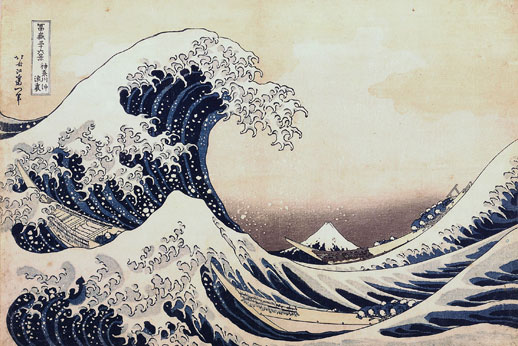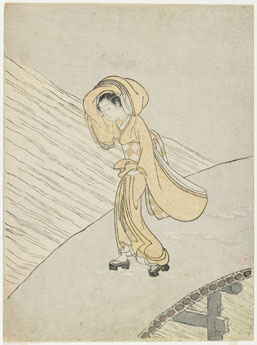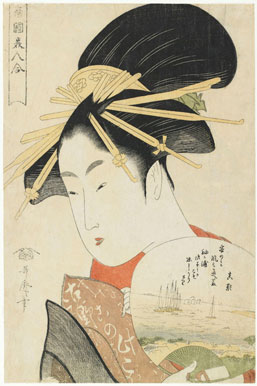Viewing the Masters Collectively
It is quite a rare treat to be able to witness such an impressive and extensive display of work taken from possibly one of the largest collections there is of the Japanese ukiyo-e masters. As its title “Common Pleasures, Uncommon Prints” suggests, this exhibition is not just a selection of the most revered works and acclaimed artists from this period, but an exhaustive selection of the genre that was produced between the 17th and the 20th centuries and remains quintessential to the Japanese cultural and visual identity.

Although ukiyo-e by these artists can be seen in museums throughout Japan, what is fulfilling with this show is the deliberate juxtaposition of their work. They were not rivals – in fact some were close friends – so it is intriguing and appropriate to make a comparison of each artist’s skill, style and aesthetic.
Ukiyo-e literally means ‘pictures of the floating world’. The art of this particular genre of wood cut printing originated in the municipal culture of Edo: this was a time when Japan was still governed by shoguns and closed off to much of the world, and yet its metropolitan areas overflowed with pleasurable activities and rituals.
This exhibition is not limited to these scenes of the infamous after-hours world of the pleasure quarters – characterized by teahouses, noblemen, geisha and courtesans – but presents us with lesser seen subject matter: tales from history and folklore, portraits of popular kabuki actors, still lives, intimate and more somber scenes of domesticity accompany the more celebrated prints of landscapes. As the display is not chronological, you are given a fascinating overview of how the art form’s stylistic approaches have evolved. Earlier works that have limited colour application give way to a dramatic increase the ink contrast, with more use of richer, vivid hues; proportions become less distorted, and the overall designs and depictions become more detailed.


By the mid-18th century, techniques were developed to allow full-color printing; the ukiyo-e that we see reproduced on infinite souvenir ephemera both in Japan and abroad, date from this period on. It is in this section of the show that the most revered and prominent masters from this period, Utamaro, Hokusai, Hiroshige and Sharaku make their appearance.
Spread out over two floors, the display is being changed during the exhibition period in order to show all of the 250 works that have been selected from the collection. This may be a disappointment for those who arrive with a particular artist or work in mind but find it not on display that day, but equally it makes for some surprises and potentially an introduction to lessor known ukiyo-e artists, especially as some prints are on public display for their first time.
The exhibition’s accompanying text is written in Japanese, you might need to bring a friend to translate, if you want more detail but are unable to read the language. However, the renowned subject matter of these prints, the sophisticated world of urban pleasures and the age-old Japanese affection for nature, speaks for itself.
Meighan Ellis
Meighan Ellis


